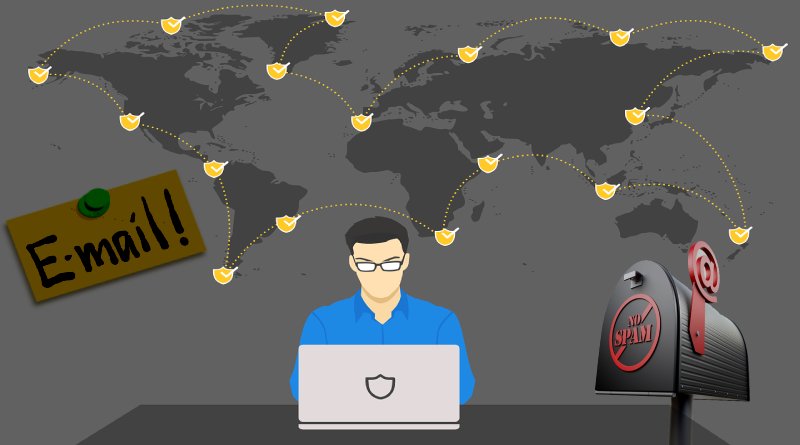In 2019, more than 350,000+ new viruses were created, and most companies struggle to keep up with the high level of threats that can compromise their emails.
In a corporate environment, no other communication system used than email. It is a preferred vector for cyber attacks. For this reason, email security is a significant concern for companies, and protecting business from advanced email threat should be a priority. Threats to emails can come from several sources. It is essential to understand them and understand what kind of danger they represent for your company.
In 2018, more than 75% of companies exposed to phishing attacks, with an increasing number of different variations and threats. The user’s awareness of these threats is still quite low, which represents a higher risk for companies.
Also Read: Learn Some Useful Strategies for Implementing Business Intelligence in 2020
Table of Contents
ToggleTypes of Threats to E-mail Security
Email Security Threat: Spam
Spam is the scourge of email worldwide. Sometimes it accounts for up to 95 percent of all emails on the Internet! Spammers receive email addresses from newsgroups, unscrupulous website operators who sell them email addresses, and malware that pirates email addresses from email accounts. Spammers also recommend email addresses, and sometimes they’re just lucky.
Spam causes several problems, including:
- Distraction and clutter
- Malware
- Network congestion
The best protection against spam (except that no email used) is to use a spam filter.
Email security threat: Spoofing
Impression by email occurs when an attacker sends you an email posing as someone you know. Phishing is analogous to sending a letter to someone and falsifying the sender’s address on the envelope. Unfortunately, Spoofing by email is easy to do and very difficult to track to your actual sender.
Email security threat: Phishing
Phishing emails have become the favorite weapon of identity thieves, and they are becoming increasingly difficult to detect. Most phishing emails claim to be from a banking institution or other financial institution (as well as from websites like PayPal), and from time to time, they are lucky and send an email pretending to be from your bank.
Even if you don’t enter any personal information, clicking on the link can infect your computer with malware that steals data.
Check Out: 5 Free Tools To Measure Instagram Analytics
How to Protect against the most Advanced Email Attacks?
With more than 100 billion corporate emails exchanged every day, it is not surprising that email is still a significant threat. Businesses around the world rely on email to communicate and collaborate quickly. And as long as companies use, chat, and interact with an email to send and receive files, malicious files, links, and attachments will continue to affect the company’s inbox.
Protecting the company from email attacks is no easy task. We no longer have the 9-5 mentality when we enter the office and connect to the network via a cable. Work is no longer a place to go. It’s something you do. We want to able to send emails on any device at any time of day, from anywhere. And that makes security market very difficult. In a nutshell: Today, companies are facing more and more email-based threats that aim to have employees click links or open attachments and download malware.
Given today’s security challenges, what is the safe and smart approach to email security? You need a complete and intelligent defense model guide on choosing reliable email security provider and an email security platform that offers multi-layered protection throughout the attack process: before, during, and after an attack:
- Advanced detection and prevention
- Multi-layer Defense
- Ongoing, network-wide visibility
- Investigation and response
- Integrated Protection
Tips
Follow these tips to reduce your risk of becoming a victim of Email Attacks
- Never click/open on a hyperlink in a suspicious email
- Do not respond to a suspicious email with personal information.
- Contact your bank by phone (choose the number on your bank’s website) if you suspect fraud
- Watch for the small charges in your bank statements
- Use emails protected with end-to-end encryption
- Educate your employees.
- Secure implementation from the beginning
- Restrict administrator privileges
- Do not download suspicious attachments
Also Read: Credit Report Check – Let’s Talk About the Advantages!
Conclusion
Daily, cybercriminals send mischievous emails to your business in an attempt to steal financial data, credentials, data, and other confidential information. Email is the main means of communication with the objective. Now, more than ever, organizations must be sure that their email security solution will protect their users, data, and assets. Businesses today need a multi-layered email security defense that provides advanced protection not only to block and detect email-based attacks but also provides visibility and control to find and remedy malware once it’s entered into your network.
Shashi Teja
Related posts
Hot Topics
Everything You Need to Know About a Savings Plan in 2025
A savings plan is a financial tool that offers the combined benefits of insurance & growth. This ensures financial security…
Mobile Threat Defense: The Silent Shield Behind Every Secure App
Mobile apps are found everywhere in India’s rapidly developing digital landscape—from banking and online shopping to healthcare and learning. And…



